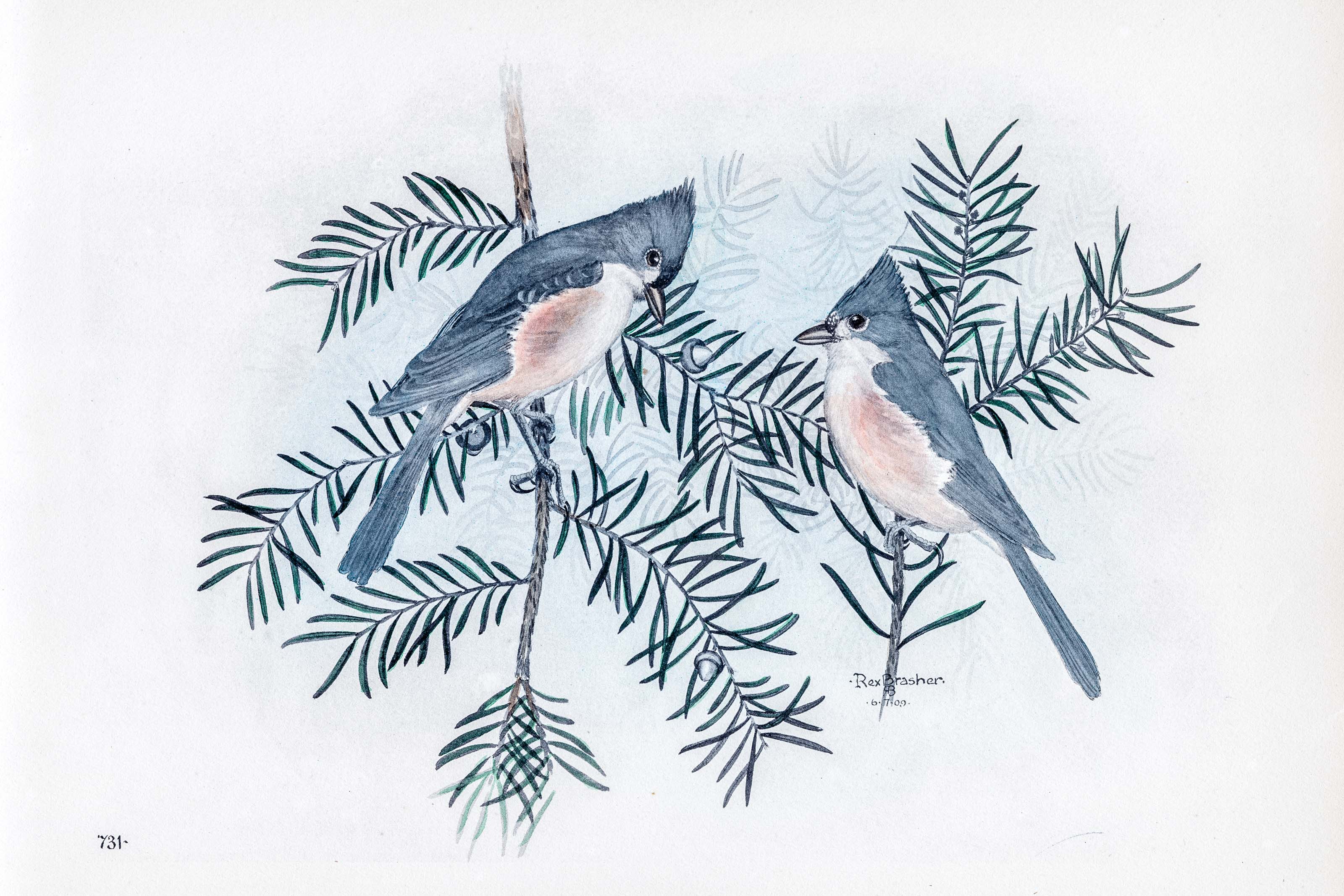
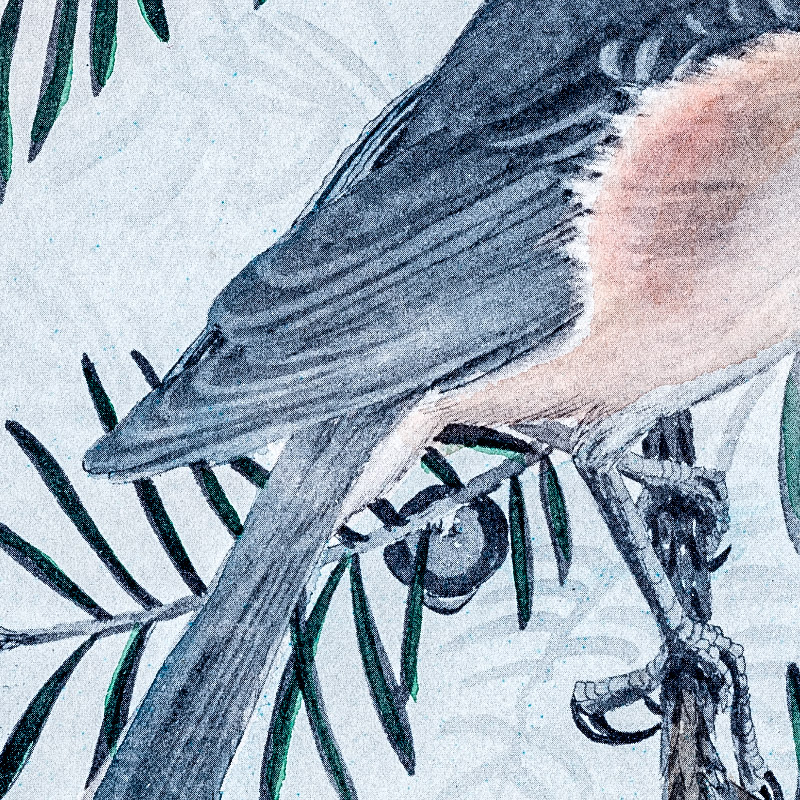
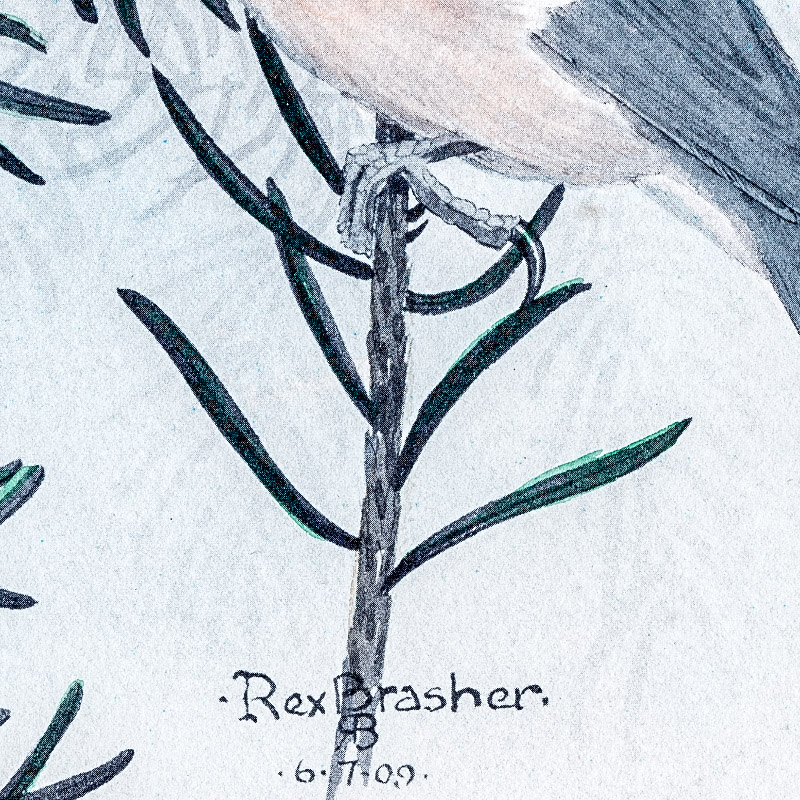
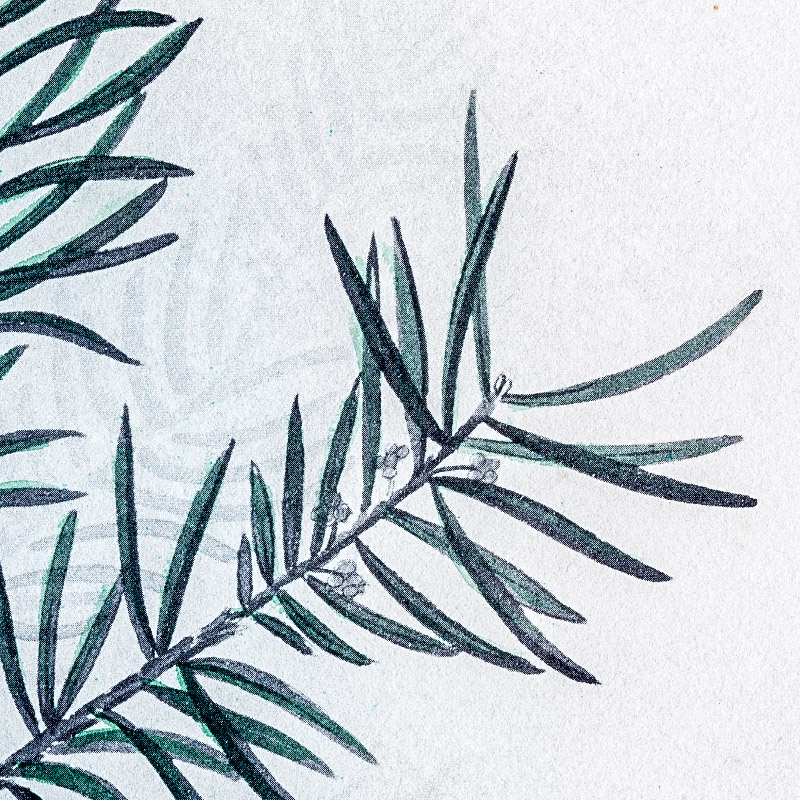
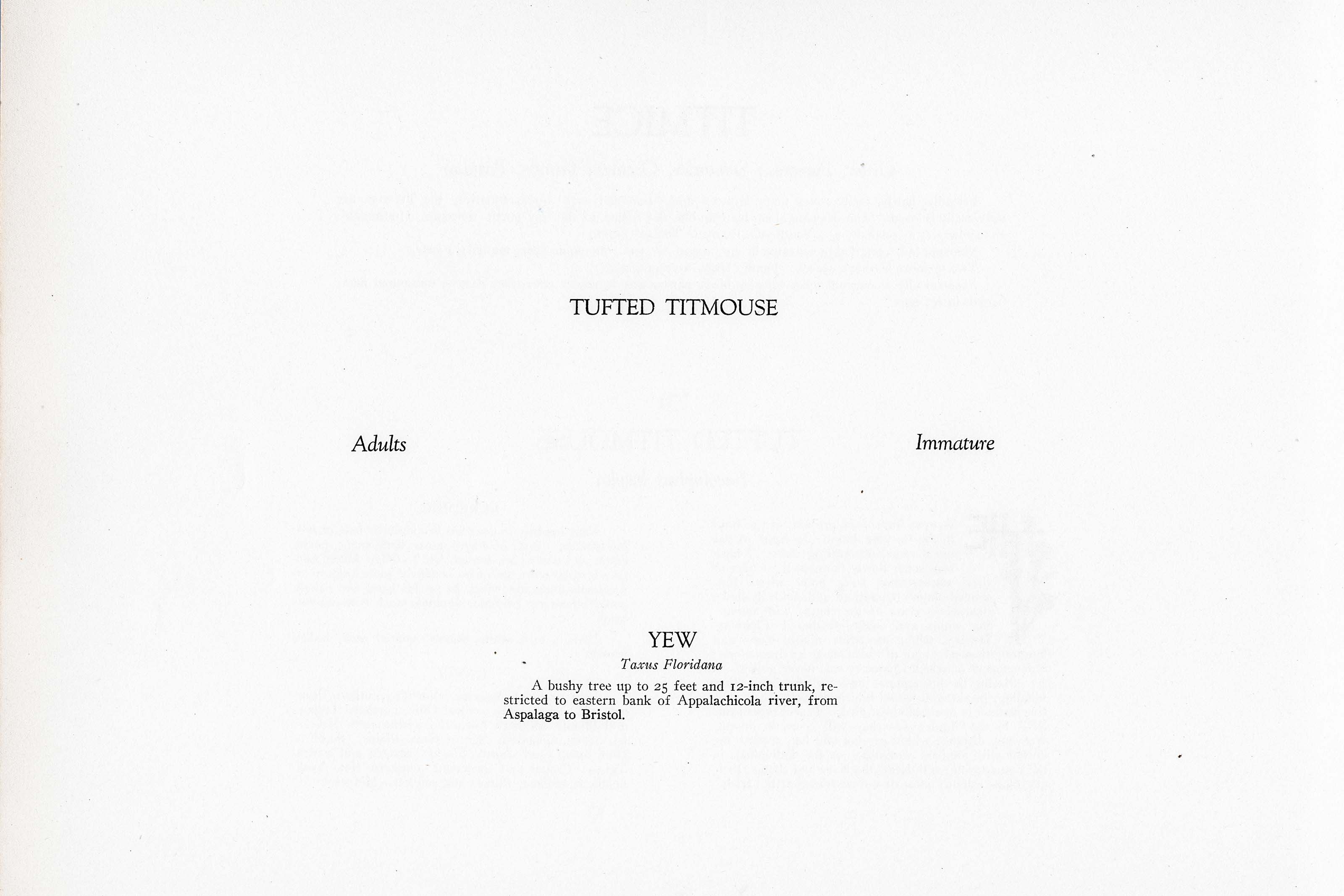
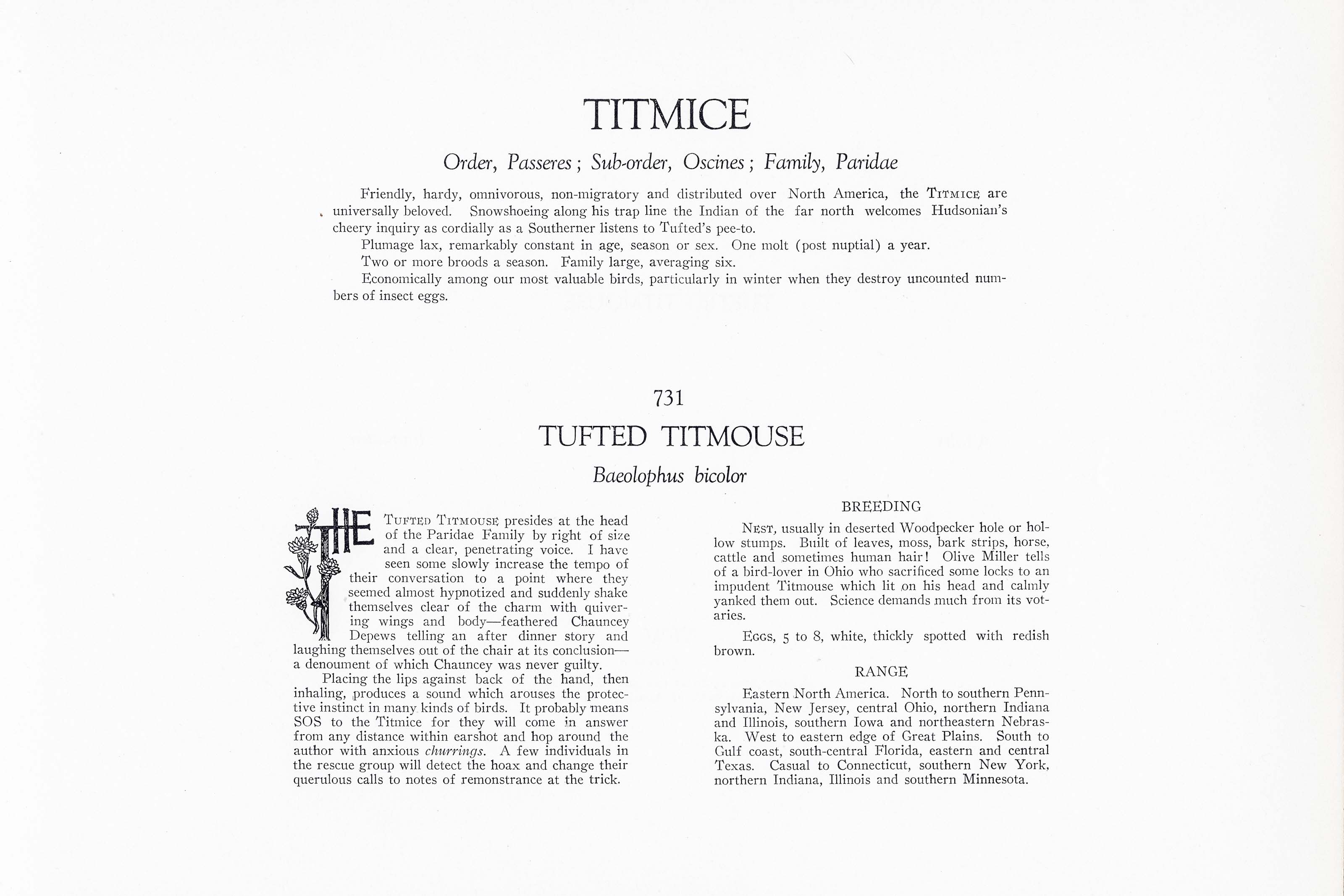

1909
1929
12
731
A team of dedicated board members, volunteers, and student interns has published every page in Volume 9. This volume includes 360 images of paintings and lyrical descriptions of birds, now available online for everyone to enjoy anywhere in the world. This is a monumental task. Each volume requires approximately 400 hours to photograph, edit, transcribe, catalog, and publish online. We need your support to complete this work.
If you're tech-savvy, have a good eye, are meticulous with details, and love structured data, please consider volunteering by emailing us at hello@rexbrasher.org.
We encourage all bird lovers and supporters to consider a monetary donation to support our mission to make Rex's work available for everyone. You can provide a one-time or recurring donation online.
THE TUFTED TITMOUSE presides at the head of the Paridae Family by right of size and a clear, penetrating voice. I have seen some slowly increase the tempo of their conversation to a point where they seemed almost hypnotized and suddenly shake themselves clear of the charm with quivering wings and body — feathered Chauncey Depews telling an after dinner story and laughing themselves out of the chair at its conclusion — a denoument of which Chauncey was never guilty.
Placing the lips against back of the hand, then inhaling, produces a sound which arouses the protective instinct in many kinds of birds. It probably means SOS to the Titmice for they will come in answer from any distance within earshot and hop around the author with anxious churrings. A few individuals in the rescue group will detect the hoax and change their querulous calls to notes of remonstrance at the trick.
NEST, usually in deserted Woodpecker hole or hollow stumps. Built of leaves, moss, bark strips, horse, cattle and sometimes human hair! Olive Miller tells of a bird-lover in Ohio who sacrificed some locks to an impudent Titmouse which lit on his head and calmly yanked them out. Science demands much from its votaries.
EGGS, 5 to 8, white, thickly spotted with redish brown.
Eastern North America. North to southern Pennsylvania, New Jersey, central Ohio, northern Indiana and Illinois, southern Iowa and northeastern Nebraska. West to eastern edge of Great Plains. South to Gulf coast, south-central Florida, eastern and central Texas. Casual to Connecticut, southern New York, northern Indiana, Illinois and southern Minnesota.
A bushy tree up to 25 feet and 12-inch trunk, restricted to eastern bank of Appalachicola river, from Aspalaga to Bristol.